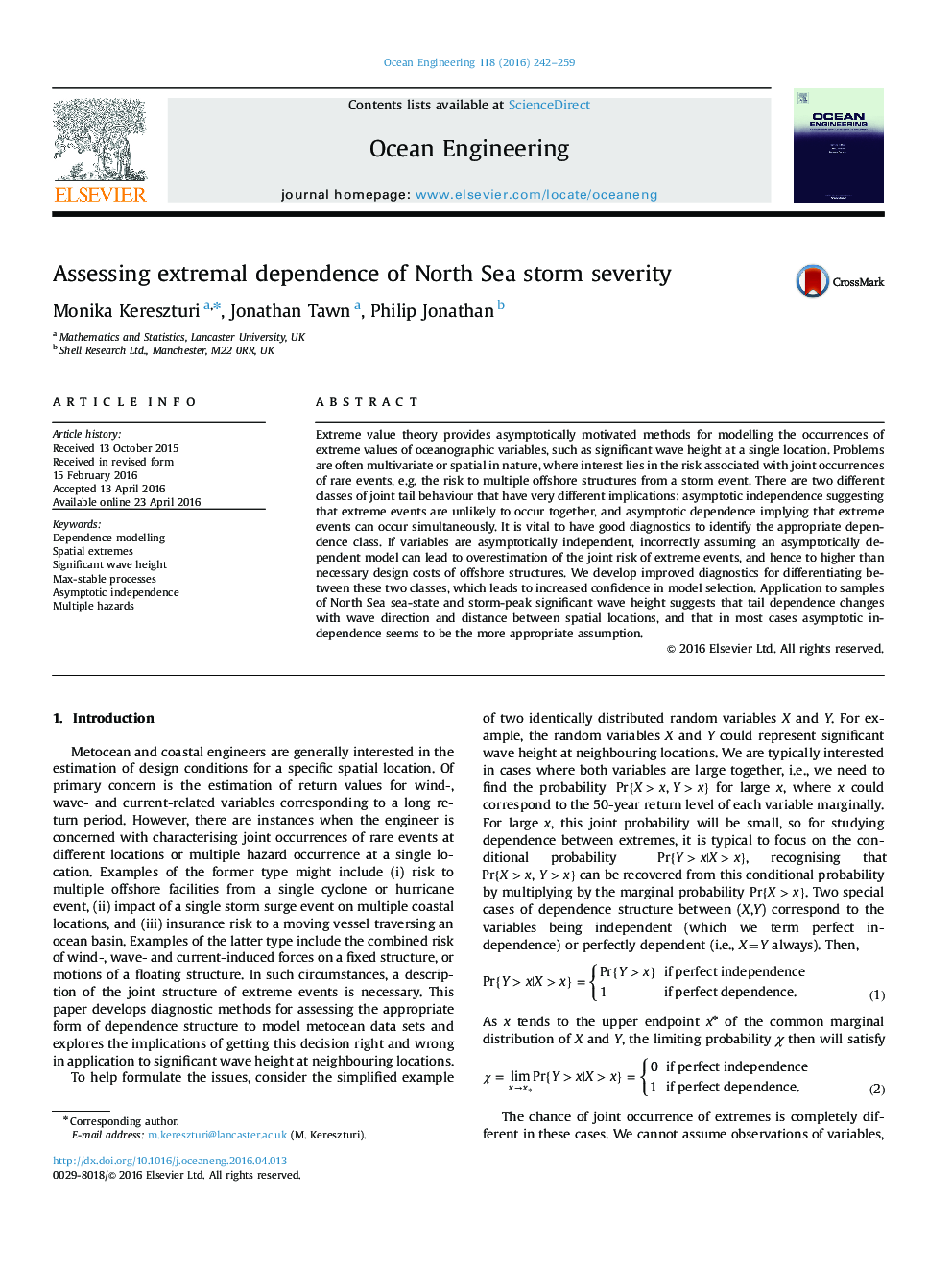| Article ID | Journal | Published Year | Pages | File Type |
|---|---|---|---|---|
| 1725088 | Ocean Engineering | 2016 | 18 Pages |
•Understanding spatial dependence of extremes is critical for reliable structural design.•We explore two summary statistics to identify form of extremal dependence.•We present a new diagnostic tool to aid model selection for extremal dependence.•For North Sea HS data, pairs of locations exhibit asymptotic independence.•We consider implications of asymptotic independence for marine design.
Extreme value theory provides asymptotically motivated methods for modelling the occurrences of extreme values of oceanographic variables, such as significant wave height at a single location. Problems are often multivariate or spatial in nature, where interest lies in the risk associated with joint occurrences of rare events, e.g. the risk to multiple offshore structures from a storm event. There are two different classes of joint tail behaviour that have very different implications: asymptotic independence suggesting that extreme events are unlikely to occur together, and asymptotic dependence implying that extreme events can occur simultaneously. It is vital to have good diagnostics to identify the appropriate dependence class. If variables are asymptotically independent, incorrectly assuming an asymptotically dependent model can lead to overestimation of the joint risk of extreme events, and hence to higher than necessary design costs of offshore structures. We develop improved diagnostics for differentiating between these two classes, which leads to increased confidence in model selection. Application to samples of North Sea sea-state and storm-peak significant wave height suggests that tail dependence changes with wave direction and distance between spatial locations, and that in most cases asymptotic independence seems to be the more appropriate assumption.
